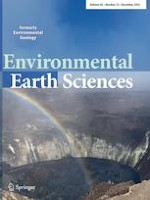01-12-2023 | Original Article
Experimental study of relationship between uniaxial compression strength and CaCO3 bonding strength of a biogrouted rock-like material
Published in: Environmental Earth Sciences | Issue 23/2023
Log inActivate our intelligent search to find suitable subject content or patents.
Select sections of text to find matching patents with Artificial Intelligence. powered by
Select sections of text to find additional relevant content using AI-assisted search. powered by
